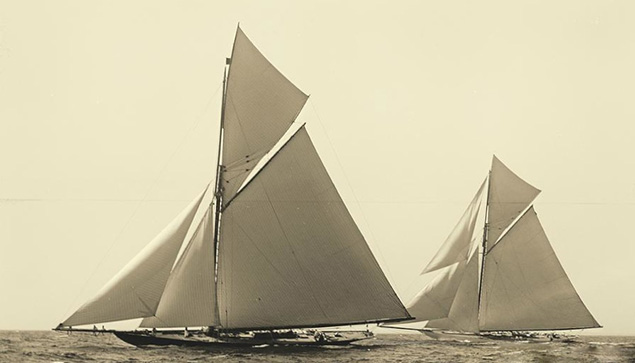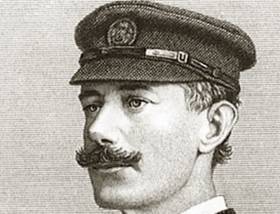Displaying items by tag: Lord Dunraven
Controversial Irish Challenger Inducted Into America’s Cup 'Hall Of Fame' – After 121 Years
The two America’s Cup Challenges made through the Royal Yacht Squadron by Lord Dunraven of Adare in County Limerick in 1893 and 1895 both had elements of controversy writes W M Nixon. And such serious ill-feeling emerged after his challenge of 1895 that Dunraven was subsequently relieved of his Honorary Membership of the defending New York Yacht Club, an extreme and unprecedented step which led to international diplomatic moves to smooth the waters between the UK and the US.
Dunraven – who had been introduced to sailing by the great John Jameson aboard the famous racing cutter Irex in Dublin Bay in the 1880s – made his challenges with large cutters designed by the renowned G L Watson. And the 1893 matter of potential friction was successfully resolved when Dunraven’s contention that there should not be an inshore course option was successfully upheld in order to ensure truer wind conditions.
 The G L Watson-designed Valkyrie II (left) racing against Vigilant in the 1893 America’s Cup. Valkyrie II was a near-sister of the Royal cutter Britannia which was built the same year
The G L Watson-designed Valkyrie II (left) racing against Vigilant in the 1893 America’s Cup. Valkyrie II was a near-sister of the Royal cutter Britannia which was built the same year
But with the second challenge by the 129ft Valkyrie III in 1895 at New York harbour, he became so incensed by what he felt was the intrusion of the huge spectator fleet into the racing area that he made a formal complaint about about it. And after Valkyrie III was held responsible for minor collision in the second race for which which he tended to blame the spectator fleet, he withdrew from the series with further grievances.
Both the Dunraven challenges ended in defeat, though he was only beaten by 40 seconds in the final race of 1893, with Valkyrie II starting to perform to her true potential. But they had successfully raised the standard of yacht raced in the America’s Cup to a much higher technical level. However, the 1895 effort ended not only in defeat, but with a high level of acrimony which lasted until this year, with the Dunraven challenges almost air-brushed out of some histories of the America’s Cup.
Yet as time has passed a greater realization has developed of Dunraven’s other achievements, for he was a man of many talents – for instance, he successfully co-chaired the Conference which brought Land Act settlement to Ireland in 1903. And some historians of the America’s Cup feel that in the hectic world of the 1890s, the American defenders may have come down a little too heavily on a Challenger who became very isolated in his efforts in 1895 after he had begun to look like a contender in 1893.
Certainly when the next series was held in 1899 – with Sir Thomas Lipton challenging through the Royal Ulster Yacht Cub with Shamrock I – the race area was rigorously patrolled by the US Navy to keep spectator vessels well away. And in later stagings of this pinnacle of world sailing, cognisance was also taken of Dunraven’s feeling that the course should be moved further away from the adverse effects of land upon wind behaviour.
So in this year of 2016, a year in which America seems to be increasingly mired with internal political controversy, it’s good to know that during the summer Windham Thomas Wyndham-Quin, 4th Earl of Dunraven (1841-1926) was finally inducted into the America’s Cup Hall of Fame for his contribution to course-setting protocols, and his pioneering of the Golden Era when huge yet technically-advanced yachts raced for the Holy Grail of international sailing.
























































